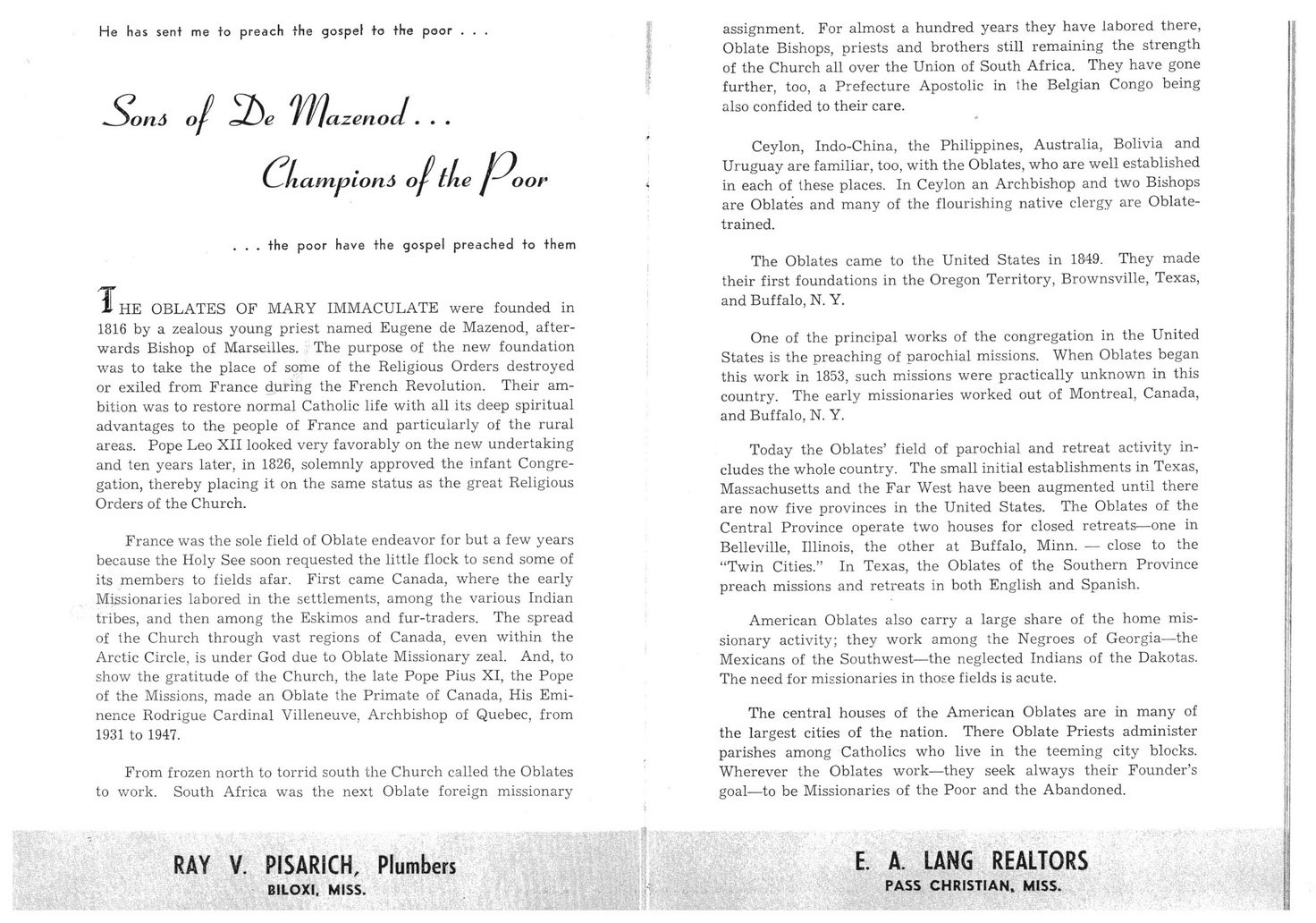This text was obtained via automated optical character recognition.
It has not been edited and may therefore contain several errors.
He has sent me to preach the gospel to the poor . . Sons o^ ^YFjazenod. . . (Champions the j-^c oor . . . the poor have the gospel preached to ther T, HE OBLATES OF MARY IMMACULATE were founded in 1816 by a zealous young priest named Eugene de Mazenod, afterwards Bishop of Marseilles. The purpose of the new foundation was to take the place of some of the Religious Orders destroyed or exiled from France during the French Revolution. Their ambition was to restore normal Catholic life with all its deep spiritual advantages to the people of France and particularly of the rural areas. Pope Leo XII looked very favorably on the new undertaking and ten years later, in 1826, solemnly approved the infant Congregation, thereby placing it on the same status as the great Religious Orders of the Church. France was the sole field of Oblate endeavor for but a few years because the Holy See soon requested the little flock to send some of its members to fields afar. First came Canada, where the early Missionaries labored in the settlements, among the various Indian tribes, and then among the Eskimos and fur-traders. The spread of the Church through vast regions of Canada, even within the Arctic Circle, is under God due to Oblate Missionary zeal. And, to show the gratitude of the Church, the late Pope Pius XI, the Pope of the Missions, made an Oblate the Primate of Canada, His Eminence Rodrigue Cardinal Villeneuve, Archbishop of Quebec, from 1931 to 1947. From frozen north to torrid south the Church called the Oblates to work. South Africa was the next Oblate foreign missionary RAY V. PISARICH, Plumbers BILOXI, MISS. assignment. For almost a hundred years they have labored there, Oblate Bishops, priests and brothers still remaining the strength of the Church all over the Union of South Africa. They have gone further, too, a Prefecture Apostolic in the Belgian Congo being also confided to their care. Ceylon, Indo-China, the Philippines, Australia, Bolivia and Uruguay are familiar, too, with the Oblates, who are well established in each of these places. In Ceylon an Archbishop and two Bishops are Oblates and many of the flourishing native clergy are Oblate-trained. The Oblates came to the United States in 1849. They made their first foundations in the Oregon Territory, Brownsville, Texas, and Buffalo, N. Y. One of the principal works of the congregation in the United States is the preaching of parochial missions. When Oblates began this work in 1853, such missions were practically unknown in this country. The early missionaries worked out of Montreal, Canada, and Buffalo, N. Y. Today the Oblates’ field of parochial and retreat activity includes the whole country. The small initial establishments in Texas, Massachusetts and the Far West have been augmented until there are now five provinces in the United States. The Oblates of the Central Province operate two houses for closed retreats—one in Belleville, Illinois, the other at Buffalo, Minn. — close to the “Twin Cities.” In Texas, the Oblates of the Southern Province preach missions and retreats in both English and Spanish. American Oblates also carry a large share of the home missionary activity; they work among the Negroes of Georgia—the Mexicans of the Southwest—the neglected Indians of the Dakotas. The need for missionaries in those fields is acute. The central houses of the American Oblates are in many of the largest cities of the nation. There Oblate Priests administer parishes among Catholics who live in the teeming city blocks. Wherever the Oblates work—they seek always their Founder’s goal—to be Missionaries of the Poor and the Abandoned. & V- E. A. LANG REALTORS ; - v ~ PASS CHRISTIAN. MISS.

Pine Hills Document (025)